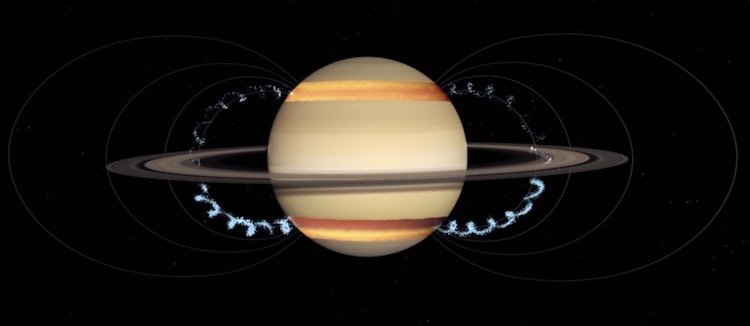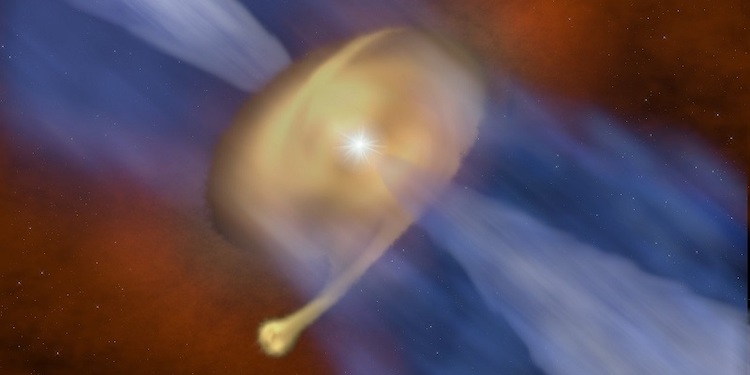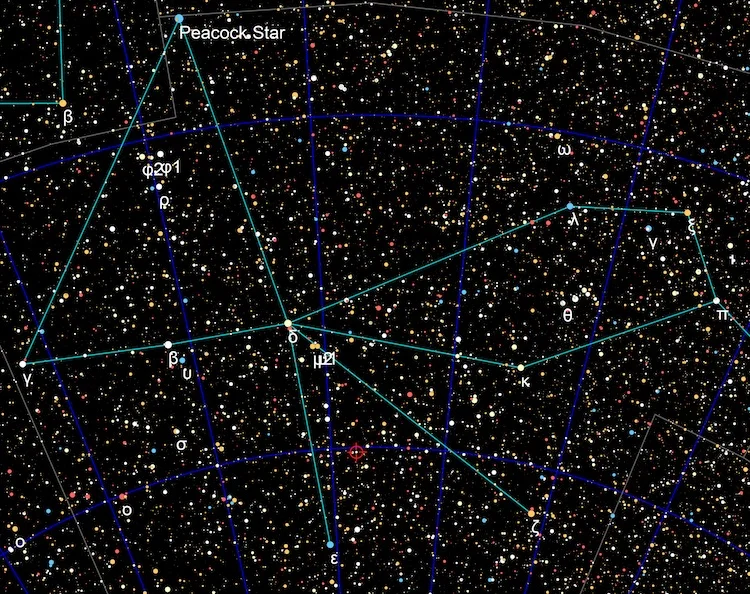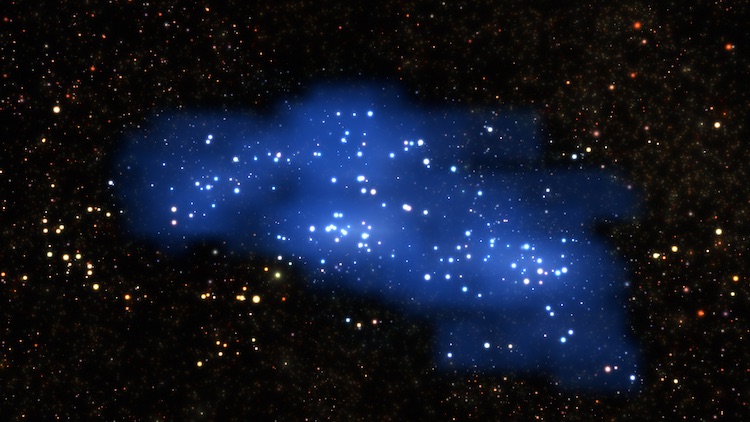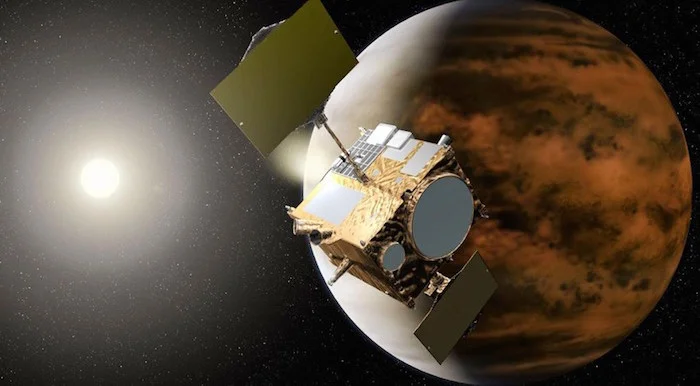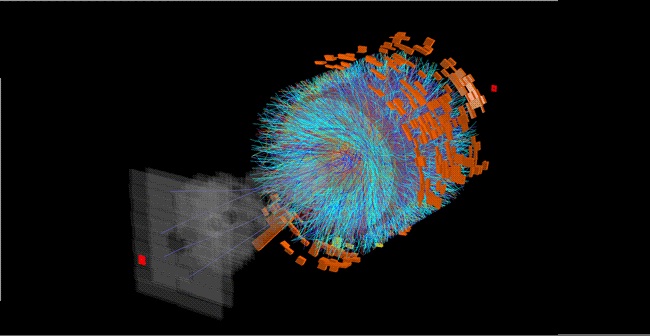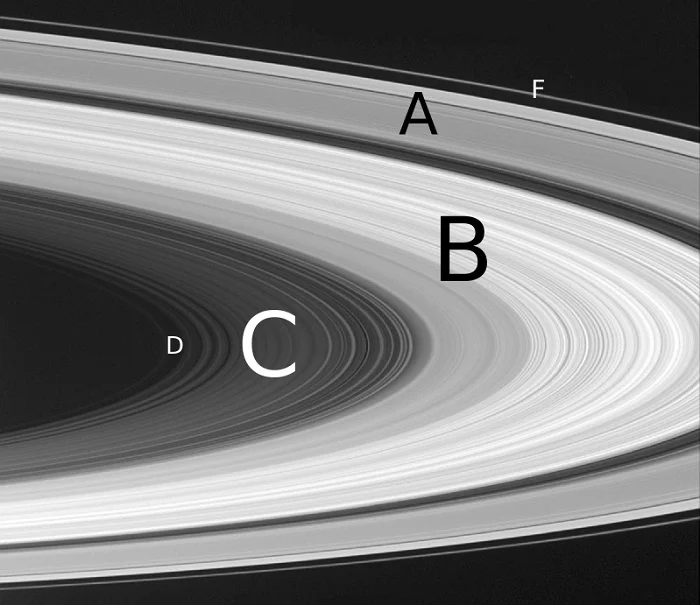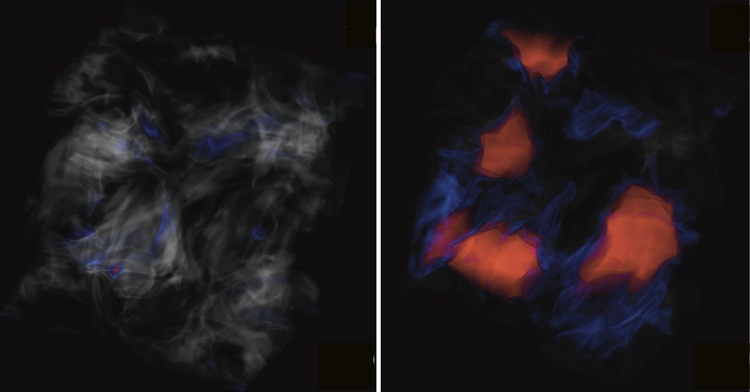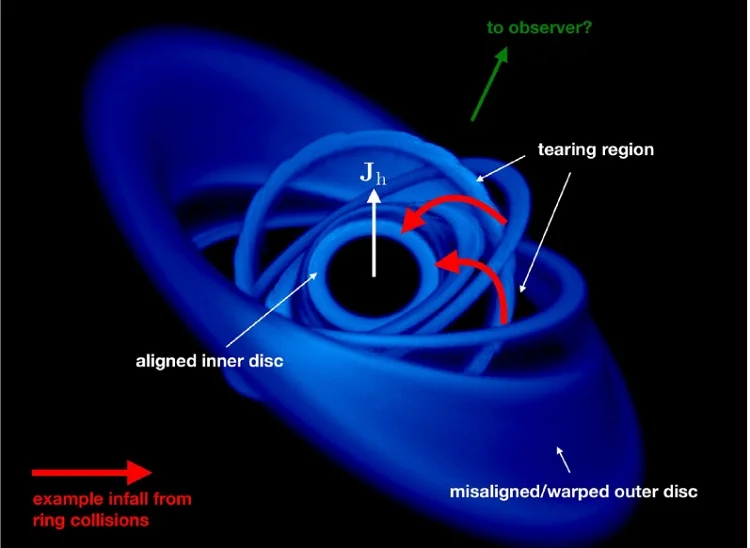Saturn’s ring particles are flowing into the planet at the rate of 432 – 2870 kilograms per second. At this rate, the rings will be gone in less than 300 million years. The rings of Saturn make the 2nd largest planet a standout in our...
Astronomers observe unusual binary stars that have a mass ratio of 80:1. The observation has been made possible by a large telescope network, Atacama Large Millimeter Array. One of these stars is 40 times more massive than our Sun, while the other...
Astronomers discover a star that might have been born in the same stellar nursery as the Sun. The age, carbon isotopes ratio and chemical abundances of this star are roughly same as the Sun. Named HD 186302, the star is 184 light-years away from...
In the largest survey of nearby galaxies, researchers observed hundreds of pairs of colliding galaxy nuclei associated with supermassive black holes. They found that black holes expand rapidly during the last stages of galaxy mergers. The force of...
Astronomers discover a gigantic supercluster that formed 2.3 billion years after the big bang. They used data from ESO’s Very Large Telescope to generate a map of over 10,000 galaxies distributed over the distant Universe. A supercluster is...
Do you also have a space fantasy (fantasies), like most of us, which you want to come true? Being realistic, there is only one space organization in the entire world that can actually make it happen. And it’s NASA, a no-brainer. While, there are...
ESA’s XMM-Newton spent more than 2,000 hours working on XXL Survey. In this survey, the X-ray space observatory observed numerous galaxy clusters and active galactic nuclei. The data obtained from this survey will help astronomers understand...
Indian Space Research Organization (ISRO) has achieved numerous remarkable milestones since its inception in 1969. Their primary vision is to “harness space technology for national development while pursuing space science research and...
Particle physicists collided xenon-ions in the 27 kilometers long superconducting Large Hadron Collider. The aim is to extract new details of Quark-Gluon Plasma – the matter that came into existence right after the Big Bang. They found that...
Saturn’s inner rings are made of water, ammonia, methane, molecular nitrogen, carbon monoxide, and carbon dioxide. The rings eject these chemicals into the planet’s upper atmosphere at 10 times faster speed than previously thought. ...
A new study explains the phenomenon that sets the properties of stars and their orbiting planets. Using simulations, researchers tracked wind material as it interacts with the ambient cloud. They deduced that winds and radiation emitted by stars are...
Researchers observed a billion light-year distant galaxy named PG211+143. Like other galaxies, it has a supermassive black hole in the center. They detected matter falling into this black hole at an extremely fast speed of nearly 90,000,000 meters...

